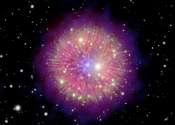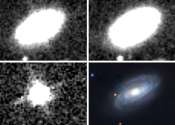The stunning echo of 800-year-old explosion
In the year 1181 a rare supernova explosion appeared in the night sky, staying visible for 185 consecutive days. Historical records show that the supernova looked like a temporary "star" in the constellation Cassiopeia shining ...









